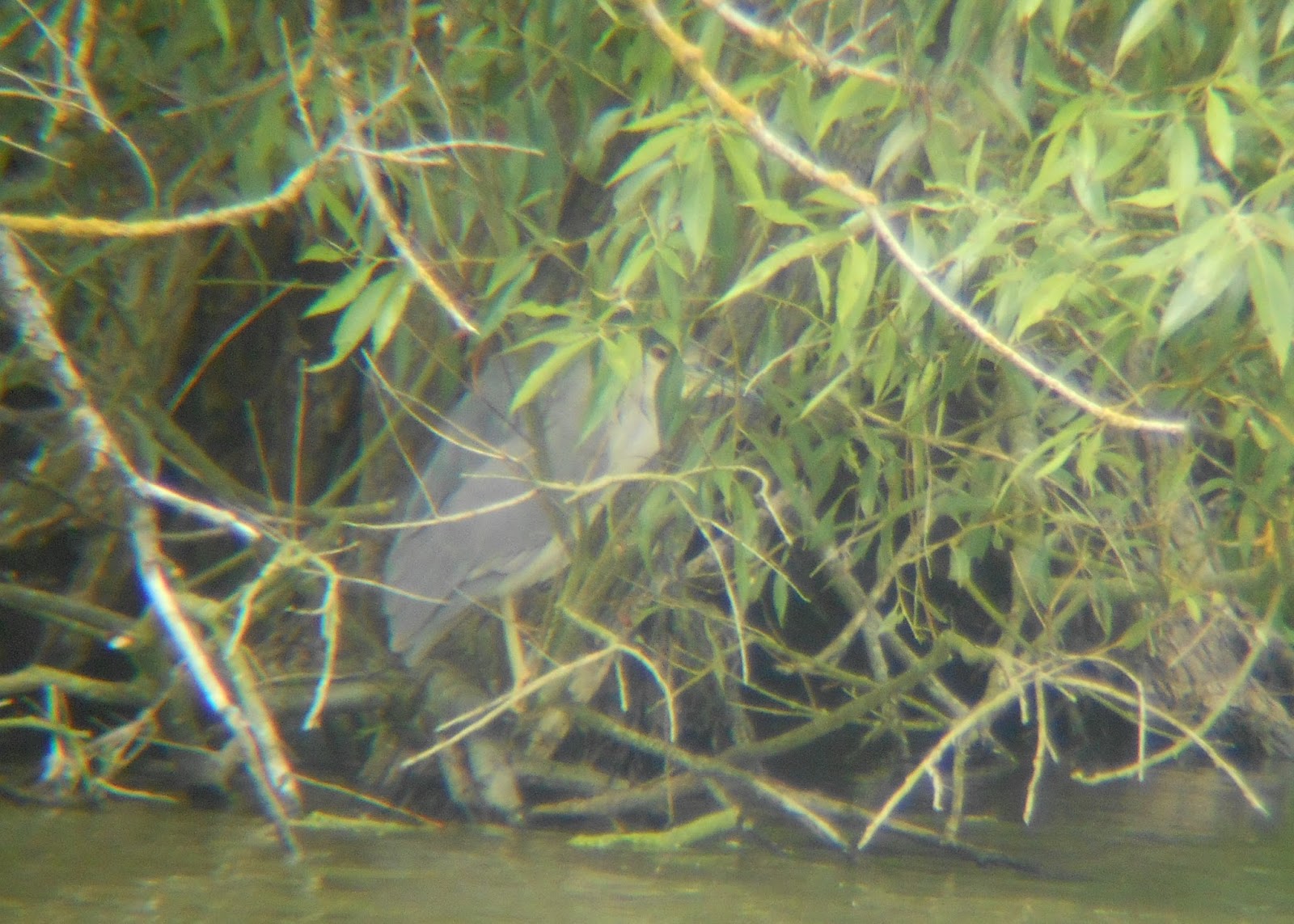26/07/14
Another day out east I hear you sigh!
Yes! It was time to head east again, and for good reason, with a number of reasonably unusual birds loitering around in Suffolk, and with an offer to visit one of the country's finest RSPB reserves it was hard to say no, so bright and early I met up with Mike, Rachael and Alana as we made our way towards the rising sun!
We first stopped off in the Suffolk breckland, where a family party of Black and white leggy birds had been wading about for the past few days. Only one pit was viewable from the viewpoint location, and the family party of Stilts weren't on it. A single Wood Sandpiper brightened up the visit, and infact was my first of the year! We hung around, but optimism soon faded knowing that the birds were more than content with feeding on the out of view pit, so we moved to a nearby site, where we managed to find 4 Stone Curlew, and a few Redstarts, both making great additions to the days ever increasing list.
Following a walk along a dusty track, we decided to head off again, towards Minsmere RSPB, and I was quite looking forward to it!
It was almost instantaneously we headed for the East hide, overlooking the freshwater scrape where a huge variety of birds were currently residing. A brief look at the Sand Martins, across the north wall and down the beach and soon the hide was in reach (in reality, the last stretch of the journey was a slow, painful trudge across shingle and sand, yuck!).
We had just reached the entrance track towards the hide when a birder coming out told us that the Pratincole was flying about, causing me to look up, and in doing so 3 Spoonbills, necks outstretched, glowing white in the burning East Anglian sun. The two adults and a juvenile circled briefly but there was no sign of any smaller brown and chestnut waders so we headed up to the hide.
Scanning around, we were told the COLLARED PRATINCOLE had again dropped back in, and soon after, really nice scope views were had as it roosted (and honestly, did very little else) on a baked dirt bund across the pool, infact blending in very well!
Despite the distance, the birds yellow throat bordered black could clearly be seen, as could the black and white forked tail. And may I say! What a stunning bird it was!
As I waited for the 'Prat' to fly, I was kept entertained by a plethora of stunning and desirable bird species. Spotted Redshank, Greenshank, Black-tailed Godwit, Little Gull and Common Tern all being present in really stunning numbers! A pair of Wood Sandpipers added to the wader list, as did virtually every common wader species, with Oystercatcher, Avocet, Little Ringed and Ringed Plover, Lapwing, Sanderling, Dunlin, Common Sand, Redshank, Curlew, Whimbrel, Snipe AND Ruff all making an appearance!
From that rather bulky list however, I must highlight my two favourites. Of the 13 Spotted Redshank, one continued to sport fully black summer plumage, and looking gorgeous as it waded in the shallow water.It was the first time I have seen this plumage, but perhaps even better than that, a mixed flock of around 40! Yes, 40 Little Gulls! These diminutive gulls being a particular favourite of mine, it was absolutely mind-blowing to see most of them still in summer plumage but showing varying amounts of Primary moult.
The large number of Common Terns often preformed a 'dread' as the whole colony flew up together, and both Sandwich and Little Tern made dashing appearances, and as usual, the Avocets did their very best to make them feel most welcomed... By flushing them.
A adult and a juvenile Kittiwake dropped in briefly, which surprised me until I learned they breed not far away on an offshore rig! Still! The adult dropped very close infront allowing us to admire its stunning plumage!
A Bittern flew across, which had me adding another yeartick for the day and gave a nice flight view until dropping into the extensive reedbed!
Honestly, that hide was perhaps one of the most 'busy' hides I have been in birdwise, with birds moving in and out constantly, making you feel like anything could drop in!
But no! That was not it! Another selection of winged beauties were to be found, so we headed over to the small pools by the visitor centre and to a clump of Buddleia which, rather glamorously, was positioned behind a toilet block to check out some butterflies and damselflies.
And they didn't take long to find, and soon we were enjoying ridiculous views of both Emerald Damselfly and Greyling butterflies, the latter being prone to landing on you!
Not a bad way to finish the visit!
Oh, and by the way! I did finally manage to see the Collared Pratincole flying, for a matter of a few seconds!
MB









































